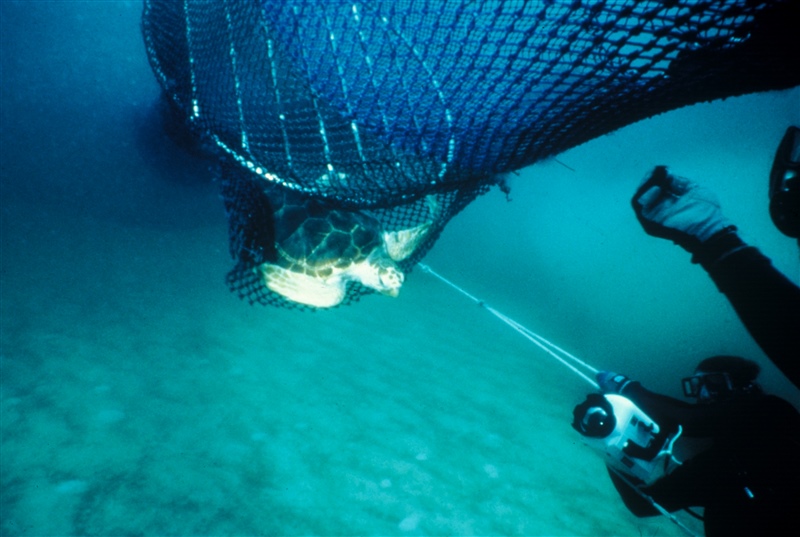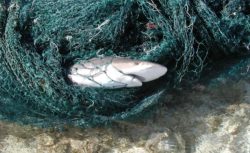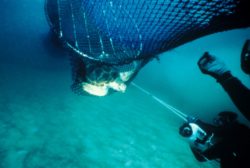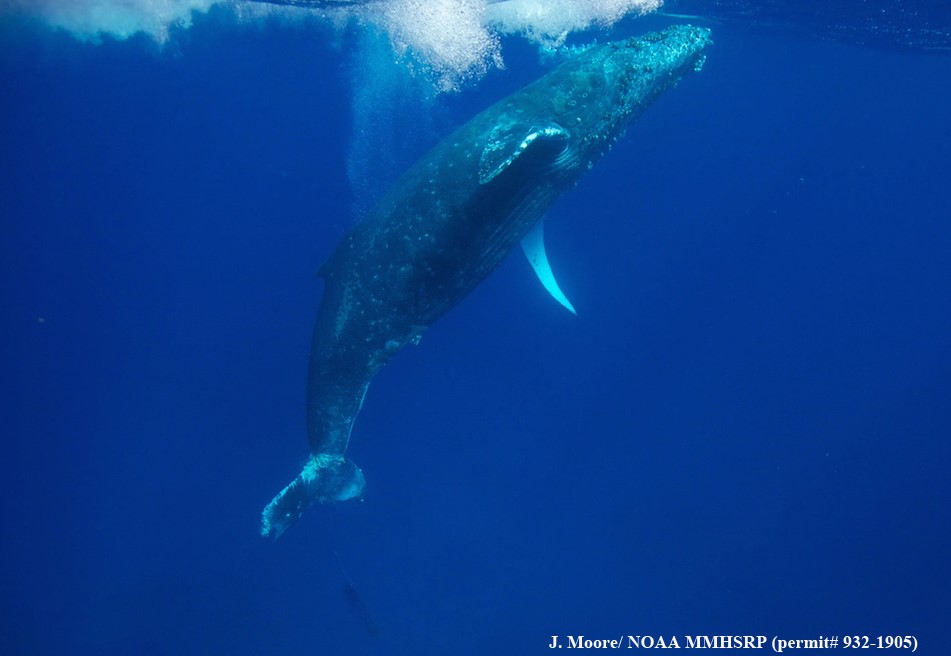
Bycatch 101: A Global Threat to the Ocean

Shark entangled in derelict fishing net. Photo: NOAA
Modern fishing gear is incredibly good at catching desired seafood species over large areas of the ocean with minimal effort. Unfortunately, equipment like gillnets, J-hooks, and trawling nets – more passive forms of gear – aren’t selective in what they trap, which can cause harm to animals fishermen don’t intend to catch. More than just a minor mix-up, the unintentional or incidental capture of non-target animals – officially known as bycatch – is a significant, global problem in our ocean that poses challenges to fishermen, recovering populations, and entire food webs.
Experts in marine policy and conservation define any species unintentionally caught in fishing gear as bycatch. Examples include other species of fish, invertebrates, sharks, marine mammals, sea turtles, and even sea birds. Severe injuries and death are common outcomes of these encounters. Fishermen generally cannot or are not allowed to keep bycatch, which means they have to discard it whether or not the animal survived the gear. In addition to reducing yields of target fish and costing fishing vessels time and money, bycatch also has significant ecological effects.
For protected and endangered species like the North Atlantic right whale or Kemp’s ridley sea turtles, individual instances of bycatch can reduce the population’s recovery or put them further at risk for extinction, and so can incidental catch of the prey these species rely on for survival. Additionally, incidental catch of sponges and coral via trawling methods can cause irreparable damage to slow-building habitats fish rely on for critical parts of their life cycles. The incidence of bycatch also changes the availability of prey and presence of predators that has effects on food webs and ecosystems, which ultimately has effects on fisheries and small coastal communities that rely on species of fish for subsistence. Finally, the social implications of bycatch – like early fishery closures, lower catch yields, and lost or damaged gear – have implications for fishermen, fleets, and entire businesses.

Turtle escaping from turtle excluder device. Photo Credit: NOAA NMFS SEFSC Panama City Beach Laboratory
Luckily, it’s not all bad news. Fishing technology is rapidly evolving, and alternative gear is in development to reduce and minimize bycatch in a number of fisheries. Innovations include turtle excluder devices (TEDs), circle hooks, ropeless crab traps, and others. Also helpful to the development of bycatch mitigation strategies is scientific research related to animal behavior, technological developments, policy changes, and population models. One example of such research is a project the National Marine Sanctuary Foundation is proud to support in partnership with the Marine Mammal Commission. For this project, the Center for Coastal Studies and Woods Hole Oceanographic Institution near Stellwagen Bank National Marine Sanctuary worked with commercial fishermen to understand bycatch and depredation of two species – spiny dogfish and grey seals – in gillnets by recording animal interactions with the fishing gear. The objective of the study is to collaborate with local fishermen, researchers, and managers to bolster efforts to maintain sustainable fisheries and practices.

Entangled humpback whale in Hawaiian Islands Humpback Whale National Marine Sanctuary
